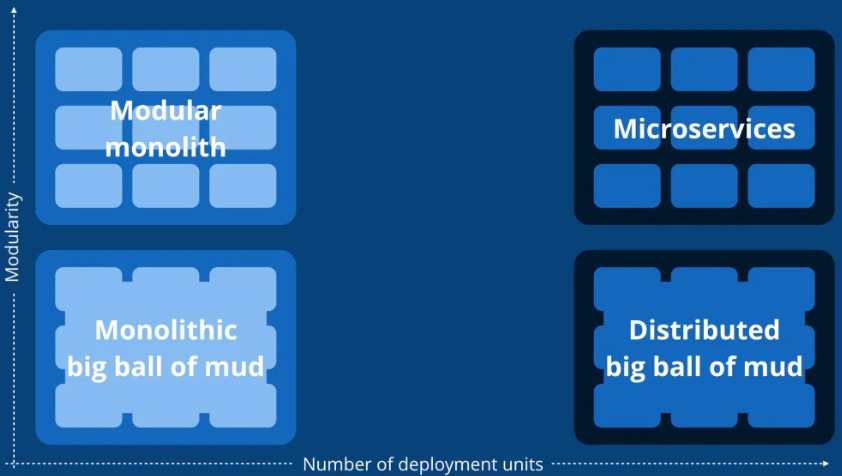Why Microservices Aren’t Always the Right Answer
What They Don’t Tell You
Microservices are often celebrated as the pinnacle of modern software architecture. They promise independent scaling, faster deployments, and the freedom to use the best tools for each job. And truthfully, when used at the right time and for the right problems, they can be a game-changer.
The truth is microservices aren’t always the best fit for every application or team, and prematurely adopting them can lead to unnecessary complexity and frustration. This isn’t about trashing microservices, they’re a powerful tool in the right context. Instead, this edition is about understanding when not to go for a microservices architecture and when other approaches might serve you better.
If you’ve been tempted by the microservices hype, stick around. We’ll explore why they’re not a one-size-fits-all solution, how to identify when they’re not right for you, and what alternatives to consider when they’re not.
What Are We Exploring Today? 📖
The Promise of Microservices
Why Microservices Can Fall Short
When NOT to Use Microservices
The Modular Monolith Alternative
Advanced Insights: Navigating Monoliths and Modular Monoliths (Paid)
Practical Takeaways for Senior Engineers
Pros and Cons of Monoliths
Shopify’s Journey From Monolith to Modular Monolith
The Promise of Microservices ✨
Microservices sound like a dream. Instead of one large codebase, you get many small, independently deployable services. Each service can scale independently, use different technologies, and be owned by separate teams.
Big companies like Netflix and Amazon famously use microservices to power their systems, and their success stories make it tempting to follow suit. But before you do, let’s talk about why microservices are not always the answer.
Why Microservices Can Fall Short 😵💫
1. They Can Increase Complexity
What looks simple on a whiteboard becomes chaos in the real world. Each service brings:
Its own API.
A separate deployment pipeline.
Unique monitoring and logging needs.
Now multiply that by 50 services. Instead of one problem, you now have many interconnected ones. Debugging a simple issue might require tracing requests across five different services, databases, and network layers.
2. They Create Operational Overhead
Microservices need DevOps maturity. You’ll need tools for:
Orchestration: Kubernetes or similar platforms to manage containers.
Observability: Distributed tracing, logging, and monitoring.
CI/CD Pipelines: Automated deployments for every service.
If your team isn’t prepared, this operational burden will eat into your velocity.
3. They Introduce Distributed System Problems
Microservices come with challenges you’d avoid in a monolithic architecture, such as:
Network Latency: Service calls are now over a network, not in-memory.
Data Consistency: Managing eventual consistency is a constant headache.
Failure Management: A single failing service can cascade into system-wide downtime.
4. They’re Expensive
Running dozens of services on cloud infrastructure often costs more than a single monolithic system. The price tag includes compute, data transfer, and added engineering time for maintenance.
When NOT to Use Microservices 🚫
Here’s when you should pause before diving into microservices:
1. Small Teams
If you have a small team, the overhead of managing multiple services will outweigh the benefits. Focus on shipping features instead of managing complexity.
2. Early-Stage Startups
Prematurely adopting microservices can cripple early-stage development. Your focus should be iterating fast, not solving scaling problems you don’t have yet.
3. Latency-Sensitive Applications
If your app relies on low-latency operations (e.g., gaming, financial trading), the added overhead of network calls between services can hurt performance.
4. Tight Budgets
Microservices need more infrastructure. If you’re cost-conscious, a monolithic architecture can achieve great performance for far less money.
5. Inexperienced Teams
Teams without distributed system experience often mismanage microservices, leading to downtime, broken APIs, and frustrated engineers.
The Modular Monolith Alternative 🏛️
Instead of jumping into microservices, consider a modular monolith:
A single application split into well-defined modules.
Modules interact through internal APIs but share the same codebase and database.
A modular monolith is easier to manage, deploy, and scale than microservices for many use cases. You can always refactor into microservices later if scaling becomes an issue.
Practical Takeaways for Senior Engineers 📌
Start with the Simplest Solution: Build a monolith first. Solve complexity only when your business demands it.
Invest in Observability: If you go with microservices, ensure you have distributed tracing, logging, and monitoring in place from day one.
Keep reading with a 7-day free trial
Subscribe to Byte-Sized Design to keep reading this post and get 7 days of free access to the full post archives.


